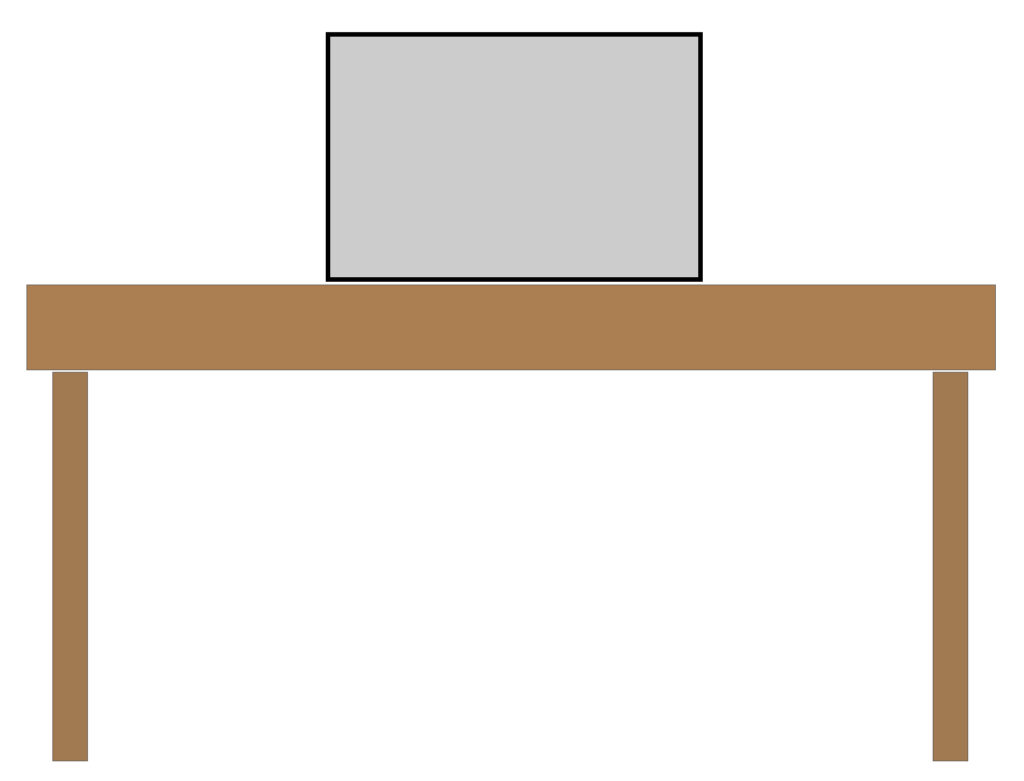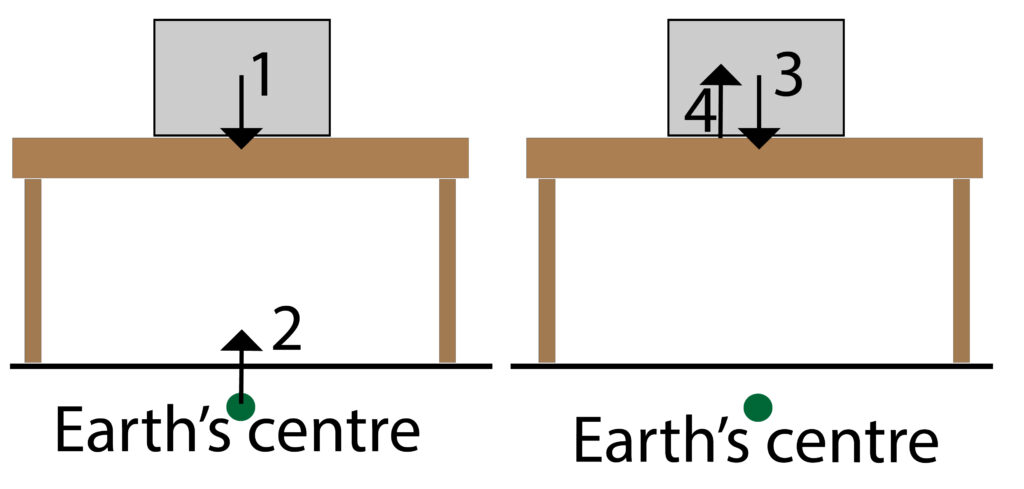AQA GCSE Free body diagrams(Physics)
Free Body Diagrams
You can think of a free body diagram as a simplified force diagram for an object.
A free body diagram will show only the forces acting on an object.
Lets look at an example of a box resting on a table.

As the box is stationary, this means that the forces on the box are balanced, and the resultant force acting on the box is 0N.
There are several forces acting here. Lets make a list:
1.Force of the Earth’s gravity acting on the box. This is called the weight of the box. The arrow starts from centre of box acts directly downwards.
2. The box will exert a reaction force on the Earth in response pulling the Earth towards the box. This arrow starts from the centre of the Earth and goes directly upwards.
Both arrow 1 and 2 are the same size, but opposite in direction. Seen in the left hand diagram below
3. Weight of the box exerting a downwards force on the table. This arrow starts from centre of the box and points downwards, found in right hand diagram below.
4.A reaction force from the table, acting upwards on the box.This arrow starts from the boundary between box and table, points upwards. The arrow has been moved slightly to the left, but it should be in the centre of the boundary between box and table. It was moved to make it clearer to see.
Arrows 3 and 4 are equal in size, but opposite in direction.
Lets draw a force diagram to show you how to draw these forces. We will do this in two separate force diagrams to make it clear.

For our free body diagram, to represent the forces on the box, we only draw the forces that act on the box, this is force 1 and 4. Force 2 and 3 do not act on the box, so they won’t be in the free body diagram.
Lets draw the diagram:
The box is represented by a dot, then the arrows are placed on the diagram.
 Typically both of these forces would have a value e.g 50N. So, normally this value is stated where force 1 or force 4 has been written.
Typically both of these forces would have a value e.g 50N. So, normally this value is stated where force 1 or force 4 has been written.
Practice Questions
1a. List all the forces that are acting when a man is standing on a solid surface
1b. Now state which forces you should use in your free body diagram if the man is considered to be the object.
1c. Draw your free body diagram for this example of a man standing on a solid surface
Absorption and Emission of EM Radiation
JJ Thomson and Plum pudding model
Ernest Rutherford and the Nuclear Model
Niels Bohr changing the Nuclear Model
Discovering the Proton and Neutron
Measuring radiation from radioactivity
Radiation types and properties
Random nature of radioactive decay
Radioactive contamination or irradiation
Hazards of contamination and irradiation
Studies on the effects of radiation on humans
Different half lives of radioactive isotopes
Nuclear Fission Chain Reaction
Writing nuclear fission equations
Drawing ray diagrams for a concave lens
Drawing Ray Diagram to produce a virtual image for a convex lens
Drawing ray diagram to produce a real image for a convex lens.
Specular and Diffuse Reflection
Seeing Coloured Objects Part 2
Viewing objects through coloured filters
Transparent, Translucent and Opaque